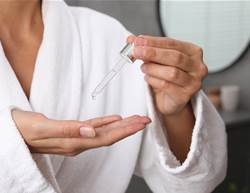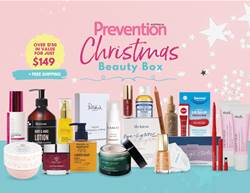You take care of your eyes in a lot of ways – shielding them from harmful UV rays with a pair of sunnies, taking screen breaks to avoid eyestrain, and exercising to reduce your risk of conditions linked to vision problems, such as type 2 diabetes and high blood pressure. But what you put on your plate can also support eye health.
“Many vitamins and minerals play a role in protecting your vision and helping to prevent eye diseases, such as cataracts and age-related macular degeneration,” says dietitian Torey Armul. Yes, you already know that carrots are excellent for your peepers, but so are these surprisingly eye-friendly foods.
1. Kale
This leafy green vegie is a great source of lutein and zeaxanthin, phytonutrients that help protect the eyes from the harmful effects of the sun and artificial light. Research shows that they can also reduce the risk of chronic eye diseases, such as cataracts and age-related macular degeneration.
Make it a side:
KALE AND MUSHROOM SAUTÉ
Heat 1 tbsp oil in a large frying pan on medium-high. Add 110g mushrooms (sliced) and cook, tossing, for 4 minutes. Toss with 1 clove garlic (sliced), then add 4 cups kale (chopped with stems removed), season with 1⁄4 tsp salt and pepper and toss until wilted.
2. Lemons and limes
The vitamin C in these citrus fruits lowers the risk of cataracts and other vision problems by helping maintain healthy blood vessels in and around the eyes, and it may also help protect the skin around your peepers from tissue-damaging free radicals.
Make it a meal:
CITRUSY CHICKEN OR FISH
Arrange sliced lemons or limes on a baking tray. Top with smashed garlic and fresh herbs such as thyme, rosemary and parsley. Place pieces of chicken or salmon on top and roast at 220°C for 30 minutes (chicken) or 12 to 15 minutes (salmon).
3. Peanuts
These crunchy legumes are full of vitamin E, which helps prevent the breakdown of eye tissue, and in turn may reduce the risk of vision problems and eye disease. Peanuts also contain healthy fats, which your body needs to absorb the eye-centric nutrients lutein and zeaxanthin, Armul says.
Make it a salad:
PEANUT AND GREEN BEAN SALAD
In a bowl, whisk together 2 tbsp rice vinegar, 1 tbsp olive oil, 1 small spring onion (finely chopped), 2 tsp grated ginger, 1 tsp red chilli paste, 1⁄2 tsp honey and 1⁄4 tsp each salt and pepper. Stir in 1⁄4 cup roasted peanuts (finely chopped). Toss with 450g green beans (blanched) and 1⁄4 cup fresh coriander leaves (chopped).
4. Oysters
Zinc is crucial for eye health, and there’s no better source of this mineral than oysters. “Just one oyster provides nearly 100 per cent of a woman’s recommended daily allowance of zinc,” Armul says. Zinc also helps transport vitamin A, another vision- supporting nutrient, from the liver to the eyes.
Make it an appetiser:
REFRESHING OYSTER BITES
Finely dice 1⁄2 cucumber and toss with 11⁄2 tbsp white wine vinegar, and then spoon over shucked oysters.








